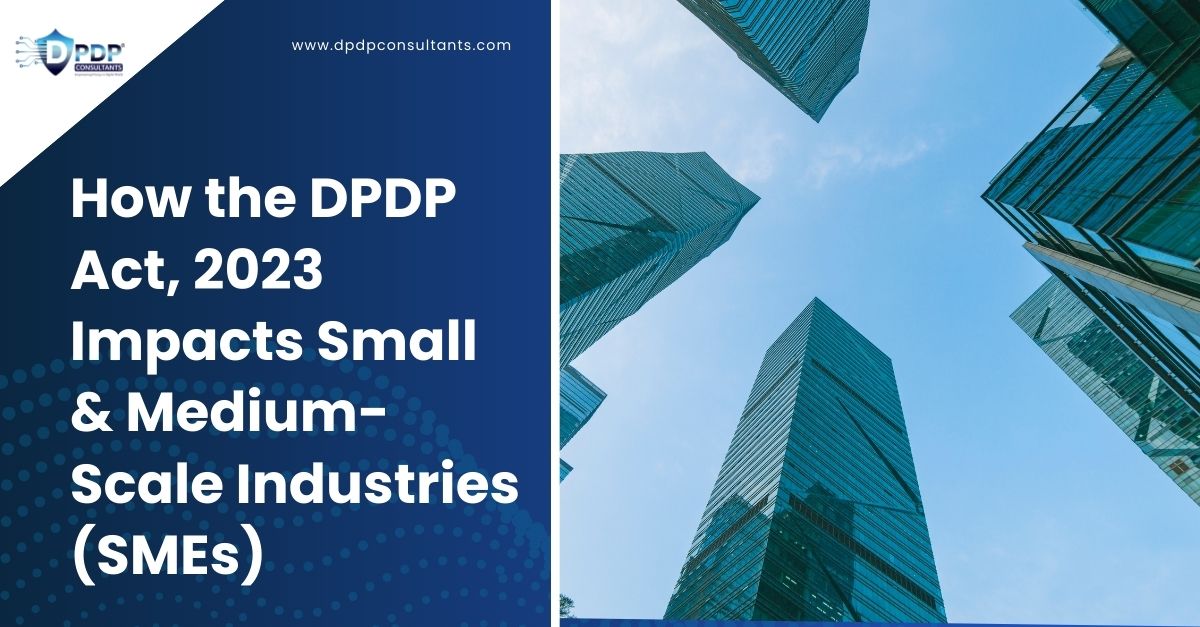In today’s hyper-connected
digital economy, personal data is collected at an unprecedented rate.
Organizations often gather information not only for operational needs but also
in anticipation of future opportunities. However, the evolving regulatory landscape,
particularly with the advent of the Digital Personal Data Protection (DPDP)
Act, 2023, calls for a paradigm shift. It is no longer acceptable to
collect personal data indiscriminately. Enter the principle of data
minimisation.
Understanding Data Minimisation
Data minimisation is the principle of collecting only the personal data that
is directly relevant and necessary to accomplish a specific, declared purpose.
It forms a foundational element of modern privacy legislation such as the DPDP
Act and the General Data Protection Regulation (GDPR).
The essence of data minimisation
lies in intentionality. Organizations must resist the impulse to collect data
"just in case" and instead focus on what is essential for the stated
function. This disciplined approach not only ensures legal compliance but also
fosters user trust and reduces data-related risks.
The Legal and Strategic Importance of Data Minimisation
The DPDP Act, 2023, mandates that
data fiduciaries collect only such data that is necessary for the lawful
purpose clearly communicated to the data principal. Non-compliance can lead to
regulatory penalties, reputational damage, and erosion of customer confidence.
From a strategic standpoint,
minimizing data collection:
- Reduces storage and security costs.
- Limits exposure in the event of a data breach.
- Enhances the organization’s ability to manage,
audit, and protect data assets effectively.
Key Questions for Assessing Data Minimisation Practices
To implement data minimisation
effectively, organizations must conduct regular assessments. Below are
essential questions that can guide this evaluation:
1. Are we collecting more personal data than necessary for the stated purpose?
This question prompts a detailed
audit of data collection touchpoints. Every field in a form, every tracking
mechanism in a digital product, and every third-party tool integrated into the
system must be scrutinized.
Best Practices:
- Map data collection points and justify each data
field.
- Eliminate optional fields marked as mandatory
without legitimate purpose.
- Avoid collecting sensitive personal data unless
absolutely necessary.
2. Have we clearly defined the specific purposes for which data is collected?
Clarity of purpose is not just a
legal requirement; it is also a best practice in ethical data stewardship.
Vague categories like "marketing" or "analytics" need to be
broken down into specific, understandable purposes.
Implementation Tips:
- Include detailed purpose statements in privacy
notices and consent forms.
- Align internal data handling processes with these
declared purposes.
- Use purpose tags in your data architecture to
manage usage boundaries.
3. Can we limit the data collected by default in our forms, apps, and processes?
Data minimisation must be
embedded into system design. Often, data collection bloat arises from default
configurations rather than business necessity.
Design Guidelines:
- Apply privacy-by-default principles to digital
interfaces.
- Use progressive disclosure—only request more data
as the user progresses through the journey.
- Clearly label optional vs. required fields.
4. Are we regularly reviewing and deleting unnecessary or outdated personal data?
Data lifecycle management is
critical. Holding on to outdated or redundant data not only increases
compliance risks but also inflates storage and security costs.
Governance Strategies:
- Implement data retention policies tailored to each
data type.
- Schedule regular data audits across departments.
- Automate deletion or archiving processes where
feasible.
5. What safeguards are in place to prevent over-collection or misuse by teams or systems?
Human error or lack of awareness
can lead to inadvertent data over-collection. Similarly, automated systems may
collect more data than necessary if not configured correctly.
Control Mechanisms:
- Enforce role-based access control (RBAC).
- Deploy usage monitoring and anomaly detection
tools.
- Provide training to teams on data minimisation and
privacy principles.
6. How do we ensure third parties we share data with also follow data minimisation principles?
Vendor and partner compliance is
a critical but often overlooked aspect. Your data protection responsibility
extends to third parties who process data on your behalf.
Due Diligence Steps:
- Establish clear Data Processing Agreements (DPAs)
with all third parties.
- Audit third-party practices at regular intervals.
- Require vendors to provide evidence of compliance
with minimisation principles.
Additional Considerations for a Holistic Data Minimisation Strategy
Beyond these core questions,
organizations should consider the following:
- User Empowerment: Do we provide users with
meaningful choices regarding what data they share?
- Consent Management: Is our consent mechanism
granular, transparent, and revocable?
- System Audits: Are our analytics tools or AI
models collecting and retaining unnecessary personal data?
- Incident Response: Can we quickly identify and
remediate over-collection in the event of a breach or complaint?
Conclusion: Embedding Data Minimisation into the Organizational DNA
Data minimisation is not merely a
compliance checkbox. It is a strategic approach that aligns privacy protection
with operational efficiency and ethical responsibility. As regulatory scrutiny
increases and data principals become more privacy-aware, organizations that
prioritize minimisation will be better positioned to earn trust, avoid
penalties, and operate with agility.
To truly adopt data minimisation,
organizations must move beyond policies and integrate this principle into their
culture, systems, and decision-making frameworks. Whether you are designing a
new product, onboarding a third-party vendor, or running a marketing campaign,
the question must always be: "Is this data essential for our
purpose?"
The future of data governance
lies not in collecting more, but in collecting smartly. Less, indeed, is more.
Need help auditing your data
practices or implementing privacy-by-design tools? Contact DPDP Consultants to learn how our
solutions support DPDP Act compliance and responsible data governance.





